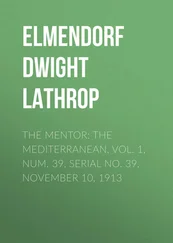Never at the best of times a very substantial-looking city – even the largest buildings having something impermanent about them, due perhaps to the fact that they have not only risen from the water but, however imperceptibly to the human eye, are now in the process of sinking back into it – on this particular evening the fog had succeeded in doing what the mirage could only accomplish for a matter of moments – caused it, apart from its lights, to disappear from view almost completely.
Disembarking from the steamer, we turned left on Riva degli Schiavoni, passing the entrances to the narrow calli which lead off from it, Calle delle Rasse, where the Serbian material used for furnishing the interiors of the felzi , the now largely extinct cabins of the closed gondolas, used to be sold, and Calle Albanesi, the Street of the Albanians, down which some of our fellow passengers had already vanished. While walking along the Riva we just missed falling into what is, because it is spanned by the Bridge of Sighs, the best known and most photographed canal in Venice after the Grand Canal, the Rio Palazzo. This would have been a bore because besides contracting pneumonia (our luggage was already at the railway station), if we had inadvertently drunk any of it we would have had to rush off to the Ospedale Civile, San Giovanni e Paolo, in order to have pumped out of us a mixture the smallest ingredient of which was water. Then we crossed the Rio by the Ponte di Paglia, passing on our right hand the Palazzo delle Prigioni, from which the magistrates known as the Signori di Notte al Criminale used to look out at night for evil-doers, malviventi , arrest and try them, and if they were sufficiently low and common and criminal, sentence them to the Pozzi , otherwise the Wells, the cells at the lowest level of the Prigioni , which were reserved for the worst sort of common criminals.
Then on along the Molo, the furthest point pirates ever reached when attacking Venice, back in the ninth century when it was young, past the forest of piles where the gondolas were moored, now, in this weather, all covered with tarpaulins, as they would be in the Bacino Orseolo, the basin behind the Piazza San Marco where there is another big fleet of them moored. For no one on a day like this would have used a gondola, unless they were sposi , newly married, or were dead and being conveyed in a funeral gondola to Isola San Michele from one of the undertakers’ establishments on the Fondamenta Nuove. In fact, today, scarcely anyone goes to the cemetery in one of the old funeral gondolas, which were picturesquely decorated with a pair of St Mark’s lions in polished brass; now the undertakers’ boats are almost all big, powered vessels.
Then we turned right into Piazzetta San Marco, with the Palazzo Ducale on one hand and the Mint and the Library designed by Jacopo Sansovino on the other, passing between the feet of the two immense grey and red granite columns that someone had brought here from Syria or Constantinople. Somewhere overhead, invisible in the fog, the grey column supported the bronze lion, really a chimera, a fire-breathing monster with the head of a lion, the body of a goat and the tail of a serpent, whether Etruscan, Persian or Chinese no one really knows, to which some inspired innovator has added wings. The other bears a marble figure poised on a crocodile, said to be that of Theodore, the Greek saint who was the patron of the Veneto until the body of St Mark arrived in such a dramatic fashion in the city (having been hastily cleared through customs in Alexandria by Muslim officials who had been told he was a consignment of pork). In fact the statue is not one of St Theodore at all, but is made up of several pieces from the ancient world, the topmost part being a magnificent head of Mithridates, King of Pontus. The statue is a copy. The original is in the Palazzo Ducale.
We entered the Piazza, described by Napoleon, in a rare lighthearted mood, and with reason, as the ‘finest open-air drawing room in the world’, an immense open space, originally paved with bricks, now covered with black trachyte, a fine-grained volcanic rock of rough texture, from the Euganean Hills near Padua, ornamented with narrow inserts of white Istrian marble. The design, made by Andrea Tirali in 1723, forms a pattern of interconnecting squares and rectangles, punctuated by white dots on the black background, so that from the belfry of the Campanile high overhead, the Piazza looks as if two parallel rows of black and white carpets have been laid end to end in it on top of a large, black, fitted carpet, for the reception of some distinguished personage.
Although a superficial glance gives one the impression that it is rectangular, the Piazza is a trapezoid, a quadrilateral having neither pair of sides parallel, and is more than thirty yards wider at its eastern than at its western end.
Three sides of it are occupied by what appears to be one enormous, soot-blackened palace of what are, to all but the most pernickety, irreproachable dimensions. The fourth side is occupied by what is arguably the most fantastic basilica in Christendom, San Marco, a building surmounted by Islamic domes, embellished with cupolas and gilded crosses on top of them, that look more like extra-terrestrial vehicles sent to bear the building away to another world than the work of an architect.
To the right of the Basilica, facing the square, is the smallest of the two squares that lead into the Piazza, the Piazzetta dei Leoncini, furnished with a fountain and red marble lions. At the far end of this little piazza is what was once the splendid banqueting hall which used to be linked with the Ducal Palace by a corridor; and at the point where it ceases to be the Piazzetta and becomes the Piazza, an archway leads out of it into the street of shops called the Merceria dell’Orologio under the Torre dell’Orologio, a very pretty building with two bronze giants on top of it, who together strike the hours for the clock below on a great bell. Hidden within the tower are the Magi who, in Ascension week, emerge from a little side door, preceded by an angel, and pass before the Virgin in her niche above the gilt and blue enamelled clock face to vanish through a similar door on the far side, a procession they make every hour.
To the left of St Mark’s Basilica the new Campanile, surmounted by a pyramidical steeple panelled in green copper and a gilded figure of the Archangel Gabriel, soars 322 feet into the air, far above anything else in the city, even the campanile of Santa Maria Maggiore. On 14 July 1902, the 113th anniversary of the sacking of the Bastille, at ten in the morning and with scarcely any warning, the original Campanile telescoped into itself and fell into the Piazza, having previously successfully withstood being struck by lightning, shaken by earthquakes, and being insidiously undermined by the acque alte . In doing so it damaged the corner of the Libreria Sansoviniana, initiated by Jacopo Sansovino, completed by Vincenzo Scamozzi and described by Palladio, in the sixteenth century, as ‘the richest and most decorated building ever perhaps created from ancient times until now’. It also completely destroyed Sansovino’s Loggetta, which was used as a guardroom when it was built; missed his magnificent bronze statues of Minerva, Apollo, Mercury and Peace, but smashed his terracotta group of The Virgin and Child (later repaired) and the Child John the Baptist. It also wrenched from its position at the south-east corner of the Basilica the Pietra del Bando, the stump of porphyry column brought by the Venetians from Acre in 1256 and set up here at the place from which the laws of Venice were promulgated, but sparing the fabric from damage. In falling, four of its five bells were broken, but the biggest, the Marangona, so called because one of its functions was to tell the craftsmen of the Marangoni , the guilds of the city, when to begin and stop work, was undamaged and was found protruding from the mountain of rubble which filled the eastern end of the Piazza. Also shattered was the beaten copper figure of the Archangel Gabriel which came plummeting down from above.
Читать дальше












